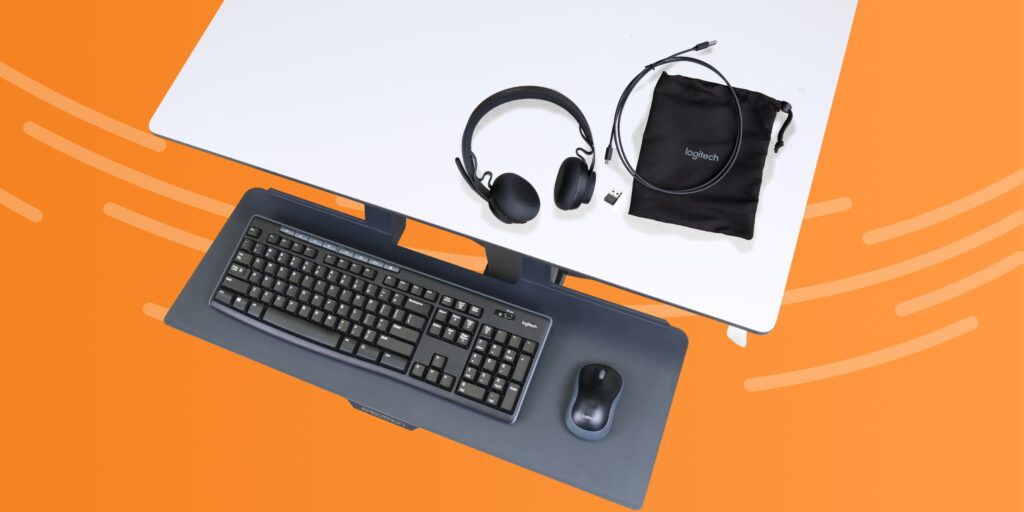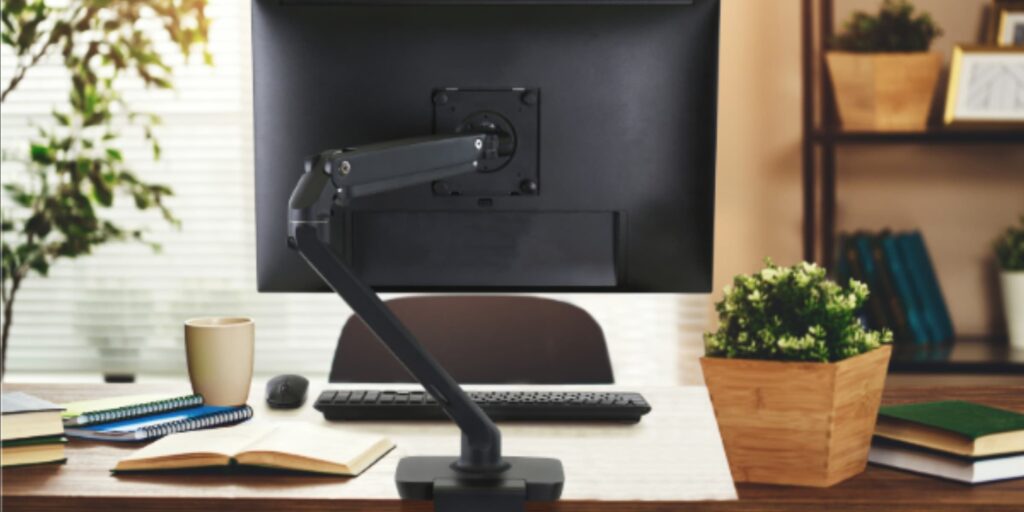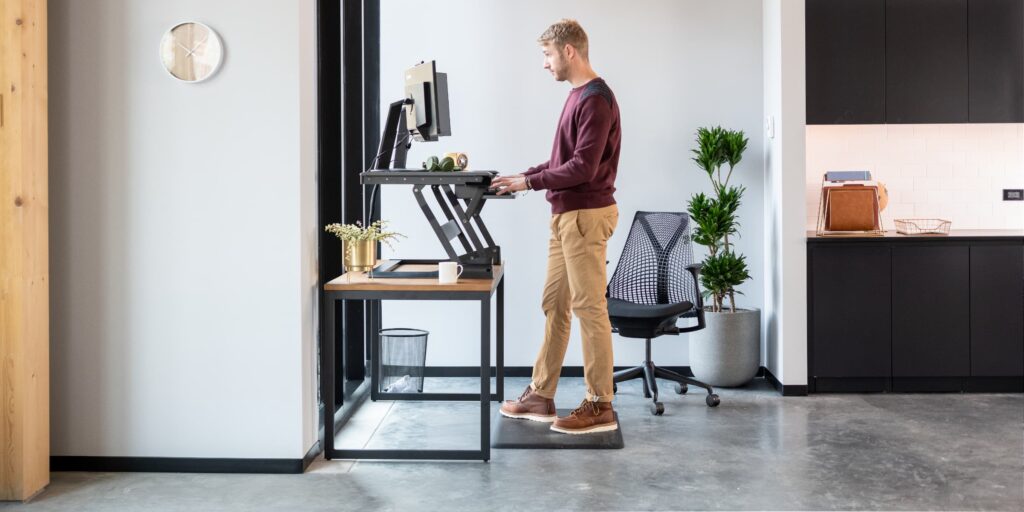With hundreds of millions of meetings held digitally by popularity and necessity, it’s important to make a positive and professional impression online just like you would in the office. Here are ten tips to improve your digital work presence:
1. Stand during meetings
Standing up helps open your diaphragm to allow more air into your lungs, and it can help you sound more confident while speaking. You can move around and use more gestures without fear of hitting your desk. This is especially helpful for meeting facilitators trying to command attention. Plus, more oxygen will help you feel less fatigued and stressed afterward.
2. Invest in a webcam
A higher quality webcam can improve your video feed to clients and coworkers. While the final image will depend on each person’s internet connection, a quality feed will set a good foundation. External webcams are also moveable, allowing you to position the camera for good framing and better posture. With laptop cameras, you can unintentionally appear to be looking down if you have a low surface.
3. Use headphones and a microphone

Platforms like Zoom and Microsoft Teams use technology to reduce echo and reverb from your speakers, but you’ll still enjoy better audio with headphones. Look for headphones with a built-in microphone that make cable management easy.
Stand-alone microphones will offer more robust sound and can be great for recording webinars or podcasts. Keep the microphone close to your mouth and use a pop filter to help make your voice clear and easy to understand.
4. Update your profile picture
Make sure you have an up-to-date headshot of yourself for others to see. Avoid low quality photos and pictures that have other people in it. If you want to mix things up, use a professional-looking photo that has a conversation starting point, like a pet, sports team or movie/video game franchise in it. It can help spark friendly discussion at the start of meetings before everyone has joined.
5. Use video with small groups and when presenting

Not every meeting needs to include video and not everyone needs to be on video. But if you’re in a presenting role or in a small group, try taking advantage of the video feature. Nonverbal communication like gestures and facial expressions are vital for attendees to interpret your message properly.
6. Tidy your background
Fun backgrounds can help break up the monotony of back-to-back meetings, but make sure you use them appropriately. Online meetings are easy to get distracted in. More than half of workers reported that they multitask during virtual meetings according to one survey.
If you are contributing to the conversation, make sure your background isn’t louder than you. If you choose not to use a background for your video feed, make sure your workspace is organized and free of distracting items or people in the background.
7. Mount your technology

Using a monitor mount or monitor arm will help you maintain better posture throughout the day and help reduce any aches and pains. Effective screen and webcam placement can also make it easier to maintain eye contact with the camera lens. Use our handy workspace planner to ensure you have the right height for your display.
If you aren’t using a monitor, a laptop stand or monitor arm with notebook tray could help your posture. This raises your display to an ergonomic height that keeps you looking ahead rather than down. Combined with an external mouse and keyboard, you can get an ergonomic boost that will help you feel more refreshed at the end of the workday.
8. Reach out to coworkers
If you’re telecommuting for the long or short term, you may see people less often than you would in an office setting. Just because you don’t share a lunchroom or hallway doesn’t mean you can’t reach out to them with a simple message or a work-friendly meme. Friendly communication can go a long way to making someone else’s day and forging important connections, especially with new co-workers.
9. Don’t forget to go on mute

In case you haven’t already learned this, it’s easier to stay on mute when you’re not speaking. Even if you don’t have excess noise in your work environment, staying on mute ensures others don’t get distracted by coughs, sneezes or a surprise visit from a pet or child. It’s a respectful behavior that both presenters and other attendees appreciate.
10. Avoid distractions
Prepare yourself for success by closing out of other work files and focusing on the meeting. If the meeting doesn’t require your full attention, it may be wise to reconsider your attendance for a more productive workday and less wasted meeting time.
With fewer opportunities to meet in-person, make sure your digital presence isn’t compromised by your technology or home work environment. Our work from home resources will help bring comfort and productivity to your at-home workspace.




